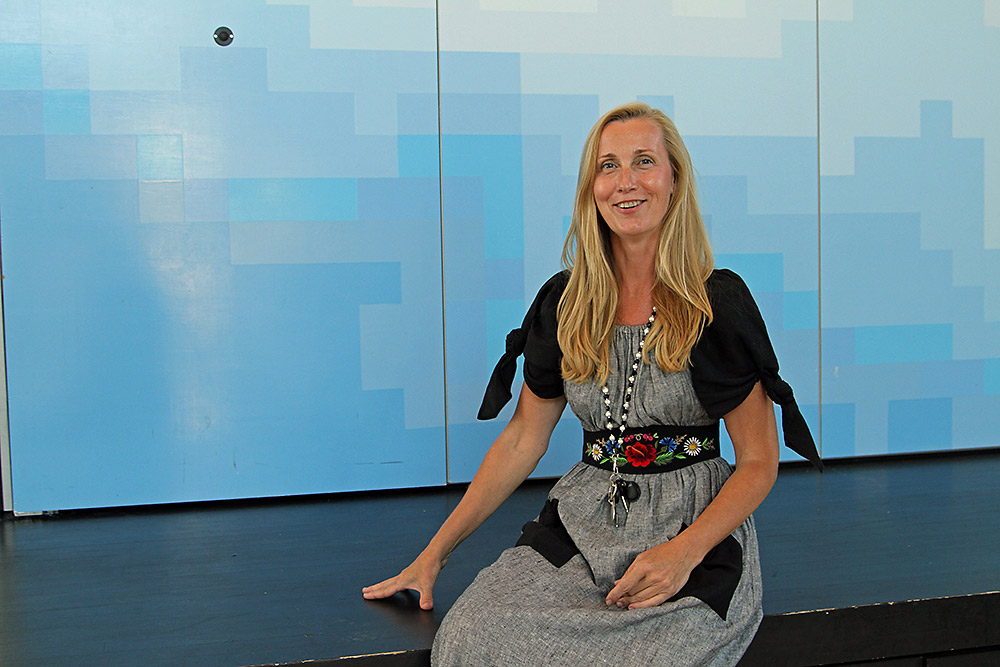
By Päivi Arvonen
When she moved with her husband from Tartu, Estonia, to Helsinki in 1992, Anne Ribelus did not believe she could get a job in Finland. But her children’s new school offered her one.
Anne Ribelus never dreamed about living abroad. But she moved from her native Estonia to Finland with her husband, who was working in Finland, because it was important for her that the family would stay together.
“At first I mainly wanted to see what it would feel like living in Finland. On the other hand, I was interested in seeing the world, too. We were still using the ruble in Estonia in those days, and there was nothing to buy. In Finland, the stores were full of goods, but the prices were really high,” Ribelus says, as she recalls her move to Finland in January 1992.
Her children were six and eight at the time. The first things that Ribelus wanted to show them in Finland were a toy store, the fruit shelves and the selection of ice creams.
As she took her children to their new school, Ribelus, a class teacher by profession, was surprised to be offered work by the school principal. There was a need for a substitute teacher who spoke Russian – one of Ribelus’ many skills.
“I found a brochure in a library about the services of the Helsinki Education Department, and I was eager to learn about teaching my native language. Estonian language teaching was only starting in Helsinki at that time. There wasn’t even a curriculum for it yet.”
Wonderful independence and freedom at work
Ribelus was hired at the Roihuvuori Comprehensive School’s Lower Stage in 1994 as an Estonian teacher on permanent basis. As she watched the challenges of her own and other Estonian-speaking children in Finnish-language learning environments, Ribelus came up with an idea about bi-lingual instruction in Finnish and Estonian. The first group of Estonian-speaking children started learning in a bilingual programme at the Roihuvuori Lower Stage in August 1996.
“It was wonderful to be able to work abroad in my own profession and in my own language.”
The independence of teachers in Finland felt strange to Ribelus in her first years of working in the country.
“I was amazed that no one would control my work and that I was trusted. At first, even the copying machine seemed like a miracle to me.”
Ribelus’ husband returned to Estonia in 1998.
“I chose Finland, my children and my work. We were divorced,” Ribelus says.
However, she does not feel that she has become Finnish, and she has not felt a need for Finnish citizenship.
“I have two identities. When I speak Finnish with Finns, I feel somewhat different from when I speak Estonian with Estonians. I live in Finland, but I’m Estonian.”
Helsinki is like a big living room
Ribelus quickly felt at home in Helsinki. She especially appreciates the closeness of nature in the city. She spent her first twenty years in the city in Laajasalo and has since lived in Vuosaari’s Ramsinniemi.
“Helsinki is a safe city, like a big living room. I always feel safe here. Even the drunks are calm and not hostile at all.”
But Ribelus is annoyed at the high cost of living in Helsinki and Finland. She enjoys the city’s extensive cultural offerings but hopes for cheaper theatre tickets. She also hopes for late-night metro service and wine in grocery stores.
“I often wonder how the poor immigrants manage in this expensive country,” Ribelus says.
She recommends to immigrants that they learn Finnish without delay.
“Language skills are important; one has to know Finnish. But it’s also important to support immigrant children’s native language skills and their knowledge of the history and culture of their native countries.”
Translated by Johanna Lemola


